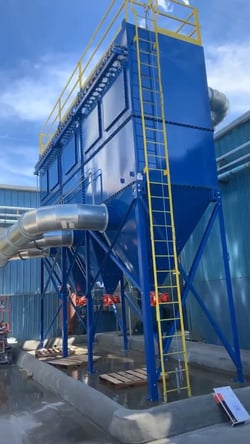
At A.C.T. Dust Collectors, we know that many people looking into industrial dust collectors aren’t sure where to start. Choosing the wrong size can lead to poor air quality, wasted energy, and higher maintenance costs, which are problems that no facility wants. We’re going to cover some of the most important factors in dust collector sizing, from airflow requirements to material considerations, so you can make an informed decision that keeps your operation safe and compliant.
We’ll show you how to match collector size to the specific demands of your industry, whether you’re working in metalworking or woodworking. These guidelines are aimed at busy professionals who need an approachable, practical resource. If you’re still unsure by the end, head over to our dust collection systems page to see how we can help select the right system for your workspace.
Why duct Size Affects Performance in Dust Collection
Duct size is pivotal because the air traveling through these ducts must move fast enough to keep dust particles suspended. If ducts are too narrow, they can choke airflow, increasing pressure drop and straining the collector. On the other hand, ducts that are too large can result in sluggish airflow, causing dust to settle and accumulate within the system.
Duct sizing should always match your target cubic feet per minute (CFM) and the intended airspeed. Relying on guesswork often leads to costly mistakes like clogged ducts, inefficient suction, or uneven dust removal. Getting these measurements right from the outset ensures your system captures the maximum amount of dust while using energy efficiently.
Why Dust Collector Sizing Matters for Industrial Applications
There’s no universal solution when it comes to dust collection—every industrial facility has unique operational needs. Heavier applications such as blasting or grinding produce significant dust, requiring larger collection units, while processes generating lighter loads may do better with more compact systems. Matching the collector’s capacity to your specific processes ensures optimal air quality and regulatory compliance.
Undersized dust collectors lead to clogs, impaired airflow, and potential OSHA violations, whereas oversized systems waste energy, occupy unnecessary space, and can actually reduce operational efficiency. Industries ranging from construction to grain processing also have varying dust properties, so choosing equipment tailored to your exact dust type is crucial. By taking the time to calculate airflow needs, evaluate workspace constraints, and factor in dust particle characteristics, you can avoid costly missteps and maintain a safer workplace.
1: Effective cleanup
While it’s true that the smaller the dust collector, the smaller the hit to your bottom line, having equipment installed that’s too small to capture your industry’s dust output can be detrimental to the safety of your workplace. When warehouses or other large facilities are left with lingering dust particles in the air, it creates a health hazard for employees and leaves your equipment working improperly. Not to mention, if your compact industrial dust collector is continuously at capacity, this will require more frequent filter changes and more maintenance.
2: Effective Business Operating Costs
Having an industrial dust collector that is too large can also cause issues. While it will certainly collect all the particles in the air, it may not be necessary for your industry to operate with such oversized equipment. Larger dust collectors cost more to install and require more space and energy. Overpaying for a large dust collector will ultimately affect your bottom line.
It's our goal to help our customers achieve their goal of optimum efficiency and safety. At A.C.T. Dust Collectors, we consider many factors before recommending a dust collection system.
The dust collector sizing and Installation Process
We’ve helped customers find the right industrial dust collectors for over 30 years, and our proven process ensures you get the best fit for your operations. Key steps involved in the process include:
- Needs Discussion: First, we will talk with you about your specific processes and dust management challenges. These insights let us pinpoint whether a larger baghouse system or a compact cartridge solution would best handle your dust volume.
- Facility Assessment: We review critical details such as your available space, the number of machines, and your current ductwork layout. By gathering this information, we can accurately project the air volume your dust collector must handle.
- Airflow Calculations: We measure airflow in cubic feet per minute (CFM), focusing on your peak dust production rates. This helps us gauge the required power to keep the air moving efficiently through your entire facility.
- Air-to-Cloth Ratio: We determine the air-to-cloth ratio by dividing the total CFM by the filter media area. A balanced ratio prevents premature filter loading, ensuring steady performance and extending filter life.
- Space and Compliance Check: If local ordinances mandate certain exhaust or structural requirements, we incorporate those into our design. This step ensures your dust collector can be placed indoors or outdoors without violating regulations.
- Equipment Selection: Based on collected data, we recommend a dust collector sized for your CFM needs and application type. With proper dust collector sizing, you avoid both underperformance and overkill—saving on costs and energy.
- Installation and Support: Our team sets up the selected system and provides training on filter changes, routine checks, and best practices. If any issues arise, we offer 24/7 assistance to keep your operations running safely and smoothly.
The Benefits of Proper Dust collector Sizing
An appropriately sized industrial dust collector protects your workforce, prevents downtime, and optimizes long-term costs. Key benefits to keep in mind include::
- Efficient Operating Costs: A collector that matches your dust load won’t waste power by running too large or strain itself by being too small. You’ll notice fewer repairs, less energy usage, and less frequent filter changes overall.
- Highest-Quality Cleaning: Well-sized systems maintain steady airflow, capturing the maximum amount of dust. This means better air quality and improved safety for your employees.
- Maintaining Correct Pressure and Airflow: Proper sizing ensures consistent suction levels across all workstations. This keeps airborne dust to a minimum and maintains a cleaner working environment.
- Eliminating Particle Recontamination: By efficiently extracting dust at the source, the collector prevents harmful particulates from recirculating through the facility. As a result, employees and equipment remain better protected.
- Effective Footprint: Overly large systems eat up precious floor space, while undersized systems must be upgraded sooner than planned. Finding the right fit saves you both physical space and future expenditures.
- Adaptability for Different Dust Types: Heavier dust loads, like woodworking or fibrous materials, may require baghouse collectors. Lighter workloads—like welding fumes or laser cutting dust—often benefit from cartridge systems.
- Streamlined Maintenance: Correctly sized units run smoothly and accumulate dust at a predictable rate. This predictability simplifies maintenance schedules and reduces the chances of unexpected shutdowns.
Ultimately, the right dust collector size supports a cleaner environment, lower energy usage, and safer working conditions for all. When you understand how much dust your operation generates, you can narrow down which collector is perfect for your facility without overspending or underperforming.
How to estimate the Right Airflow for Your Dust Collection System
Determining airflow in cubic feet per minute (CFM) is one of the most important steps in dust collector sizing. Your collector must handle the maximum volume of dust your machinery can produce, which means it needs to move enough air through the system to capture those particles effectively. This ensures cleaner air for your team and reduces the risk of dust buildup.
First, list all machines or stations that will be connected to the dust collector. Include any backup or future equipment you may add, so you’re not caught by surprise if operations expand. Estimating your total airflow need upfront prevents costly resizing or additional installations.
You can estimate CFM by referencing each machine’s dust capture requirements—often listed in the owner’s manual or provided by the manufacturer. Summing these values gives you a rough baseline for your entire system.
Here is an example calculation:
- Non-hazardous dust in a 12 ft x 15 ft workspace:
- Area = 12 ft x 15 ft = 180 sq ft
-
- Required air speed = 80 ft/minute
-
- Dust collector size = 180 sq ft x 80 ft/minute = 14,400 CFM
- Dust collector size = 180 sq ft x 80 ft/minute = 14,400 CFM
For hazardous dust, use the same calculation method but with the 100 ft/minute air speed requirement.
Once you have this baseline, you can account for real-world conditions like partial machine usage or ductwork losses. This helps pin down a more accurate figure, ensuring you select a dust collector that can handle everyday operations plus occasional surges in dust production.
Is Your Dust Collector Sized for Growth?
When planning a dust collection system, it’s smart to think about where your business might be in a few years, not just where it stands now. Expanding operations, adding new machines, or taking on larger projects could quickly exceed the capacity of an undersized system. Factoring future growth into your initial dust collector sizing decision can prevent the headache of needing to replace or upgrade your equipment prematurely.
In addition, having a system that can handle small increases in dust load offers peace of mind and operational flexibility. It also saves money in the long run, since you won’t have to retrofit or significantly alter your ductwork and filters each time you add new processes. By preparing for tomorrow’s production demands today, you’ll maintain a safer, more efficient work environment even as your business evolves.
Don't Forget to Factor in Static pressure
Static pressure loss occurs when air encounters resistance traveling through ductwork, bends, and filters. The longer and more complex your duct layout is, the higher the static pressure, which your dust collector must overcome to maintain adequate airflow. Fortunately, you don’t need to calculate this yourself—A.C.T. handles these variables for you during the design and installation process.
Get Help with Dust Collector Sizing
Before diving into the installation phase, learn more about the differences between baghouse and cartridge dust collectors, how much budget you might need, and other key benefits of purchasing a dust collector. We have equipment on hand and ready to ship before the year’s end, and our team can guide you through sizing to ensure your system performs at peak efficiency for your industry’s needs. By letting us handle the detailed design work, including static pressure loss and airflow calculations, you can focus on running your business with confidence that your dust collector is right-sized for the job.
We’re here to help you find a dust collection solution that meets your specific requirements, and we have equipment on hand ready to ship. Please reach out to discuss your needs and request a quote, and our team will walk you through everything from filter media considerations to final installation. If you anticipate future expansions, we can size your system accordingly to save you time and money in the long run. Partner with us to keep your facility clean, efficient, and ready to grow.


























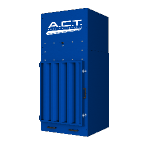
%20Collectors%20Image.png?width=143&height=143&name=ADC%20(Ambient)%20Collectors%20Image.png)
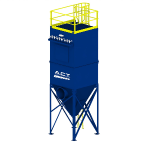

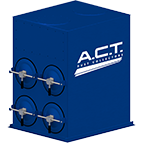
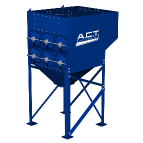
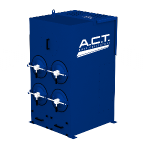


















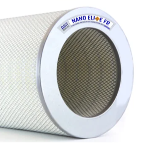


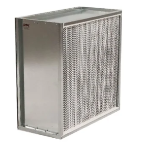

.png?width=240&height=91&name=ACT%20Dust%20Collectors%20Logo%20Solid%20White%202020%20(1).png)
.png?width=148&height=149&name=usa-manufactured-dust-collectors%20(1).png)